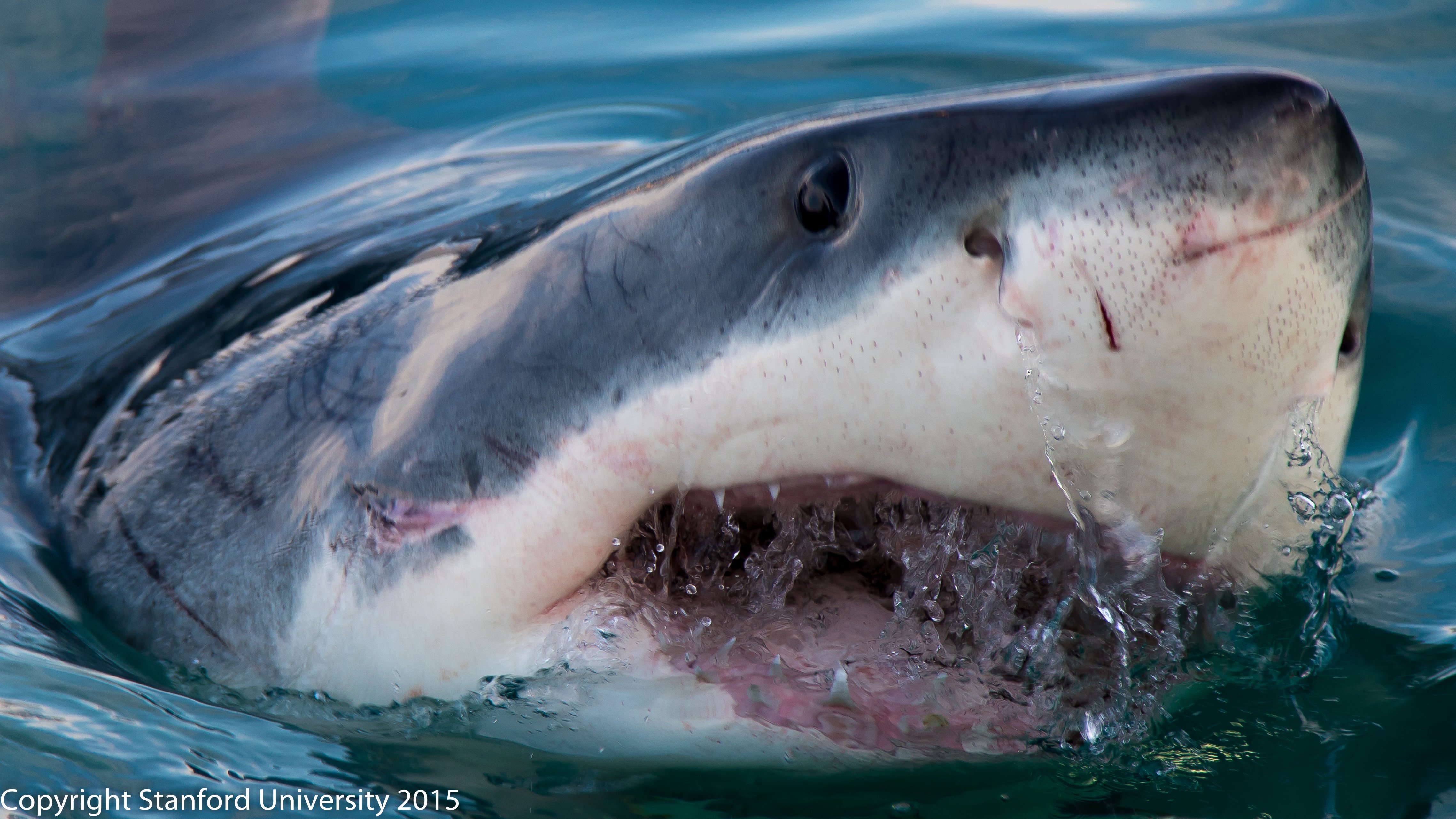Reproductively mature great white sharks are modestly increasing in abundance along the central California coast, researchers from Stanford’s Hopkins Marine Station, Monterey Bay Aquarium and Montana State University found in a study published in April.
The white shark, often caught accidentally by fisheries, is currently classified as a vulnerable species by the International Union for Conservation of Nature. Monitoring the populations of the apex predator is central to evaluating management efforts and determining whether ecosystems are in balance.
According to study co-author Taylor Chapple, white sharks can serve as a sentinel: the health of their populations can give scientists an idea of the health of the whole ecosystem.
“It’s a little indicator. It’s a little red light flashing in our management models to say, ‘Hey, your sharks are decreasing,’” Chapple said. “Something’s not going on with the way that we’re managing this whole system.”
The study, conducted from 2011 to 2018, sampled various locations around the Bay Area with a seal-shaped decoy that served as a visual cue to attract white sharks.
To estimate population size, researchers photographed white sharks, recording overlap with previous sightings by paying special attention to the shark’s dorsal fin. Lead author Paul Kanive explained that notches on the dorsal fin can serve as a long-lasting, unique identifier for each shark.
“The advantage of using the dorsal fin is that it doesn’t change over long periods of time,” Kanive said. “We have sharks that are in our database where we’ve shown that a dorsal fin pattern can be recognized and unchanged for 27 years.”
Using this method, the research team identified 419 distinct sharks.
The researchers attribute the increase in white shark abundance to greater prey abundance and the 1994 California bans on gill and trammel nets and white-shark fishing, although they were unable to rule out changes in shark density as a cause.
“For something out in the ocean like that, you can’t tell exactly why things are going the way they’re going, but you can certainly say, well, protecting white sharks from being killed by nets and trawlers and fishing gear is going to help,” Stephen Palumbi, a marine biologist at the Hopkins Marine Station who is unaffiliated with the study, said.
Chapple said long-term sampling sets the study apart. Since white sharks can live up to 70 years, collecting data over multiple years is important to accurately model and draw conclusions about population dynamics.
“You have inner-year variability,” Chapple said. “This year, the temperature outside is a little bit different. Rainfall is a little bit different than it was last year, and so in order to be able to account for that variability in the external characteristics, you have to have a longer time period.”
Despite sharks attacks’ sensationalized reputation from John Williams’s “Jaws” theme, death by lightning strike is over four times more likely in California, according to the Florida Museum of Natural History. Shark attacks do occur, but humans pose a greater threat to global shark populations than sharks do to humans.
Although the population is only modestly increasing, the overarching takeaway is that the white shark population is healthy, according to Chapple. Meanwhile, Kanive has organized a fundraiser to support further work on monitoring white shark populations of California.
“When you look at our paper and see that the population is right now holding steady or potentially possibly increasing a little bit, that’s a really good sign,” Chapple said. “That’s something that we should be celebrating and not something we should be fearing.”
